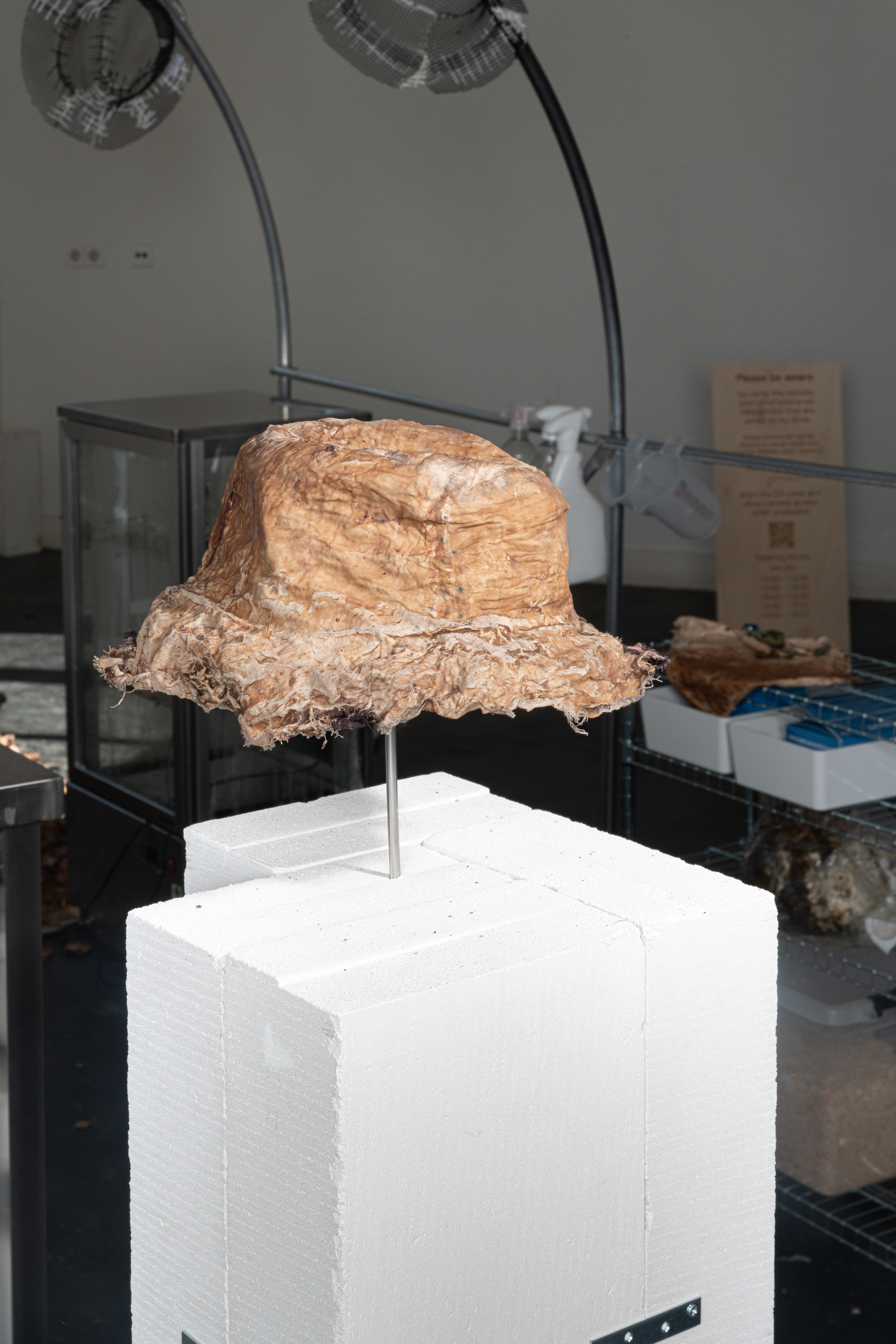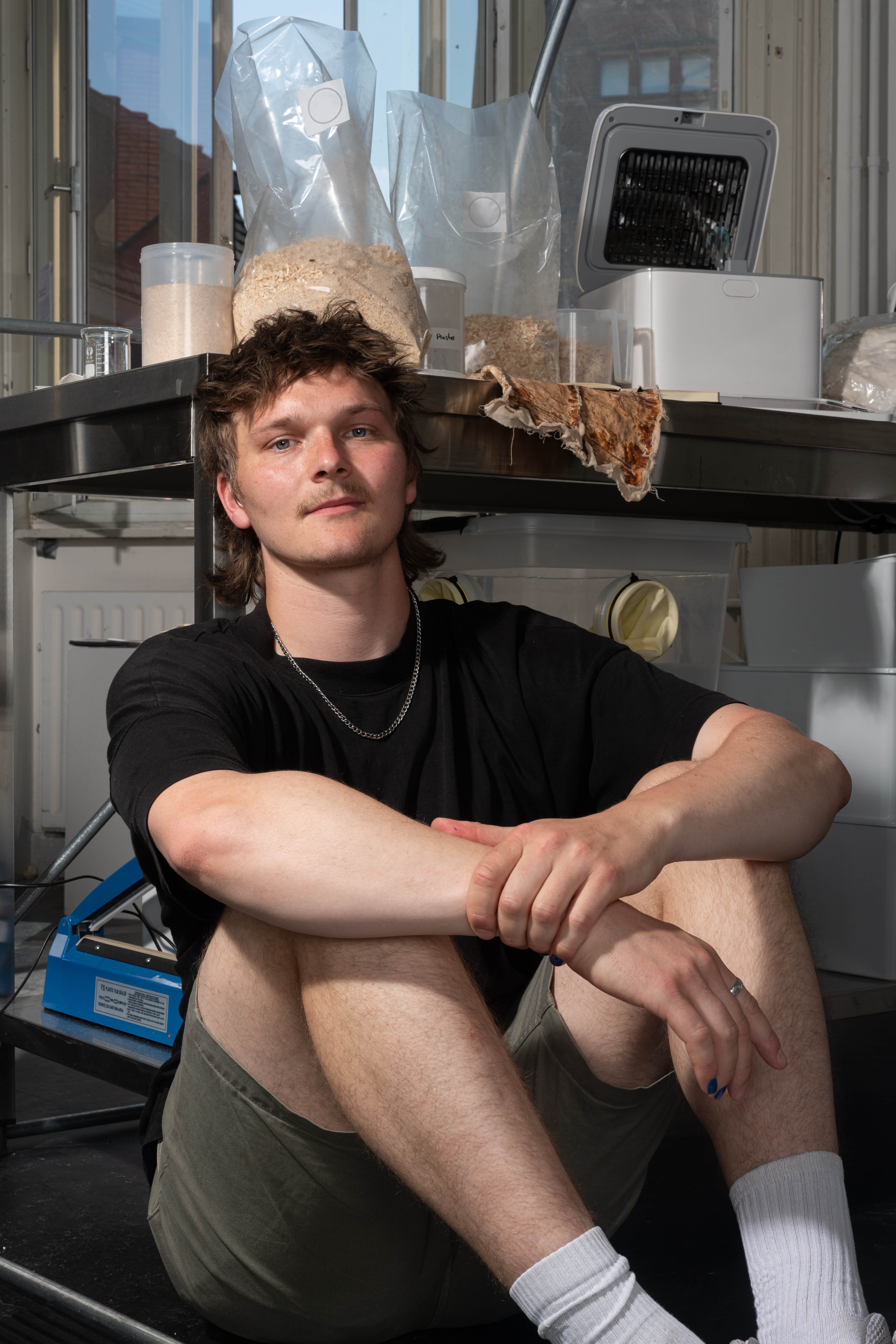Greenhousing Saprophytes
–
Moritz Plöns
–
Moritz Plöns
Organisms engage in relationships, crossing the boundaries of their own species. They are influencing and interacting with each other, which makes them dependent on one another. These relations are often neglected in traditional bio-design processes.
Greenhousing saprophytes derives from the tension of utilizing organisms for human needs on the one side whilst respecting non-human perspectives on the other. Investigating microbial relationships and the ethical implications that come along when working with micro-organisms, this project envisions a design practice that utilizes micro-organisms whilst valuing microbial relations.
![]()
Bio-design approaches often involve the isolation of micro-organisms from their original habitat. Cultivated in laboratory settings, their environment is controlled by human beings, to develop a form serving human purposes. Relationships with other microbes are thereby eliminated, but as these are rarely beneficial to the cultivated organism, the environment of control also allows to take care of organisms with certainty. This control was therefore embraced within this project.
Representative of this tension, fungal mycelium was examined. Working with Pure Mycelium Material (the fungal organism in its pure form, mostly used for leather-like applications) enabled a practice that takes a fungus from the forest, cultivates it in the laboratory, and, after harvesting, reintroduces the remains of the process – a reproductive fungal organism – into its original habitat.
![]()
![]()
The central site of this project was the laboratory set up inside a greenhouse. In this greenhouse different stages of control were explored to develop a three-dimensional growth of Pure Mycelium, a technique accumulating the mycelium only at the spots, where it is needed by the human being, in order to waste less of the organism.
![]()
Greenhousing saprophytes derives from the tension of utilizing organisms for human needs on the one side whilst respecting non-human perspectives on the other. Investigating microbial relationships and the ethical implications that come along when working with micro-organisms, this project envisions a design practice that utilizes micro-organisms whilst valuing microbial relations.

Bio-design approaches often involve the isolation of micro-organisms from their original habitat. Cultivated in laboratory settings, their environment is controlled by human beings, to develop a form serving human purposes. Relationships with other microbes are thereby eliminated, but as these are rarely beneficial to the cultivated organism, the environment of control also allows to take care of organisms with certainty. This control was therefore embraced within this project.
Representative of this tension, fungal mycelium was examined. Working with Pure Mycelium Material (the fungal organism in its pure form, mostly used for leather-like applications) enabled a practice that takes a fungus from the forest, cultivates it in the laboratory, and, after harvesting, reintroduces the remains of the process – a reproductive fungal organism – into its original habitat.


The central site of this project was the laboratory set up inside a greenhouse. In this greenhouse different stages of control were explored to develop a three-dimensional growth of Pure Mycelium, a technique accumulating the mycelium only at the spots, where it is needed by the human being, in order to waste less of the organism.
